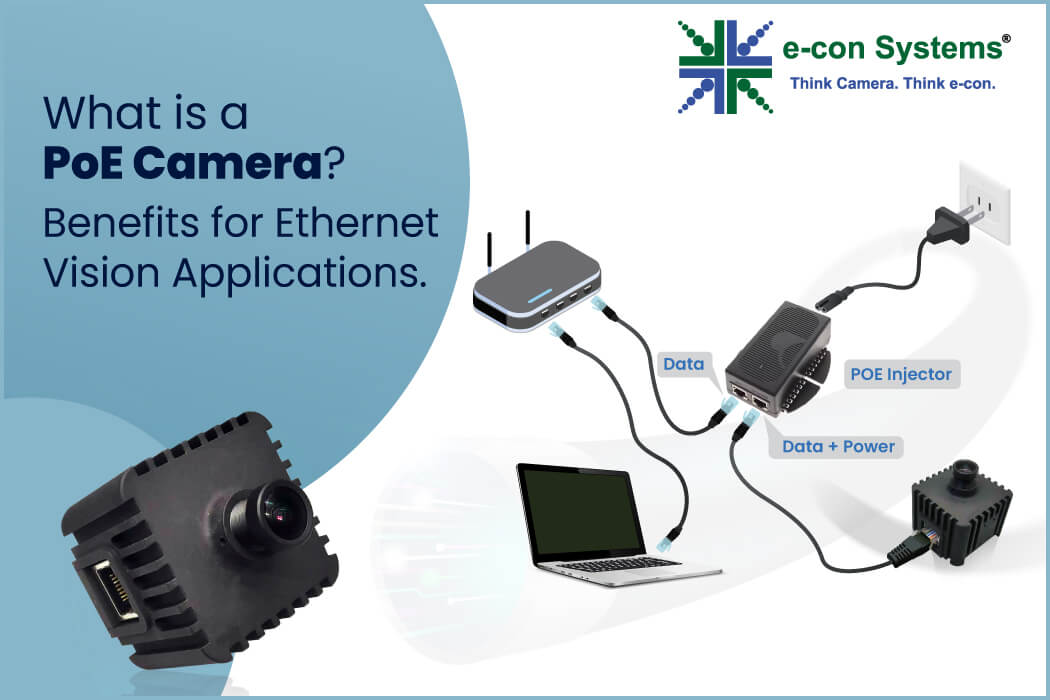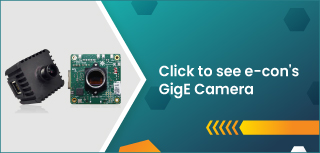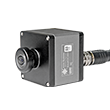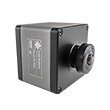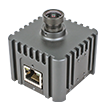Before we dive into what PoE cameras are and how they function, it’s important to address the monumental impact they’ve had on industries. These cameras have paved the way for the smooth integration of intelligent embedded vision systems into various environments, from bustling factories to quiet city streets.
In our previous blog, we gave you a thorough look into the world of Ethernet cameras, their top features, etc. Today, let’s understand the impact of PoE cameras, how they work, and their role in powering Ethernet-based vision applications.
What is a PoE camera?
The acronym “PoE” stands for “Power over Ethernet.” A PoE camera is a sophisticated imaging device that seamlessly combines both its power source and its data connection capabilities through a single Ethernet cable. Traditional setups often necessitated the use of separate cables for power and data transfer, leading to potential tangles, increased installation complexities, and heightened chances of malfunctions.
In stark contrast, leveraging PoE technology simplifies this scenario by minimizing clutter and the associated logistical challenges. This integration leads to streamlined operations, reduced potential points of failure, and better utilization of resources, which, in the grand scheme of things, can be a game-changer for many embedded vision applications.
How does a PoE camera work?
The primary function of a PoE camera is its capability to transmit both electrical power and data using one Ethernet cable. This design consolidates the processes of power and data transfer into one system. Two critical components allow this system to function optimally: the PoE injector and the PoE switch.
- PoE injector: This is a device that’s strategically positioned between the camera and the network switch. Its main role is to supply electrical power to the data cable. As the data travels to the camera, it’s accompanied by the required power, enabling the camera to function without a separate power source.
- PoE switch: This is a more comprehensive device that combines the roles of a regular network switch with a PoE injector. This integration allows it to support multiple PoE cameras at the same time. Each camera gets its data connection and power supply from the switch via individual Ethernet cables.
As a result, it acts as a central hub for multiple surveillance systems. Such a design simplifies the task of setting up and managing a surveillance network, making the entire process more straightforward and seamless.
A quick look at the benefits of PoE cameras
- Simplified installation: With a single cable doing all the work, installation becomes streamlined and hassle-free.
- Cost-effective: Reducing the need for multiple cables and power outlets translates to direct cost savings.
- Flexibility: PoE cameras can be installed in locations where power outlets might not be readily available.
- Reliability: With fewer components involved, there’s a reduced risk of something going wrong. Furthermore, certain PoE switches come with backup power options so that the cameras remain operational even during power outages.
- Scalability: Easily expandable, you can add more cameras to the network without much fuss.
How PoE cameras empower Ethernet-based vision applications
Industrial
PoE cameras improve the performance and increase the reliability of several industrial applications. For instance, these cameras play a key role in Intelligent Transportation Systems (ITS) – helping real-time tracking of cargo movements within large industrial settings. It drives timely deliveries while identifying potential bottlenecks. PoE cameras are also used in surround-view systems where they are strategically placed to capture every angle of a machine in operation. This helps preventive maintenance and enables operators to get a complete view, boosting safety and operational efficiency.
In inspection and safety devices, PoE cameras continuously oversee production lines and provide real-time feedback. It makes sure that any deviations from set quality standards or any mechanical discrepancies are promptly flagged. Plus, quality control or maintenance teams can be quickly alerted for rapid interventions.
Retail
PoE cameras have been transforming how modern retailers operate – empowering autonomous shopping and shelf monitoring systems. These cameras help oversee store aisles and product placements, providing retailers with real-time inventory data while detecting stock levels and identifying when replenishments are needed. They can also leverage advanced image processing capabilities to recognize misplaced items or potential thefts.
In autonomous shopping systems, PoE cameras are crucial to managing customer interactions by tracking picked-up items and automating billing processes without the need for traditional checkouts. Hence, retailers can maintain optimal inventory levels, enhance store efficiency, and elevate the shopping experience for customers.
Medical
In medical settings, these cameras are employed for remote monitoring of patients. So, the well-being of patients is taken care of – reducing the need for constant physical check-ins. Imagine a large hospital ward where nurses need to monitor multiple patients simultaneously. Hence, using PoE cameras, a healthcare professional can quickly check on a post-operative patient’s condition from a central monitoring station without having to walk to their room every time.
This saves time and effort while making sure that patients in critical conditions are constantly observed, and immediate actions can be taken in emergencies.
Smart city (Traffic/Parking Lot)
From traffic management systems analyzing congestion patterns to managing parking lots, these cameras provide the necessary data for city managers to make informed decisions. As an example, consider a bustling urban center with frequent traffic jams and limited parking. By installing PoE cameras at strategic intersections and parking areas, city officials can get a clear view of traffic flow and parking occupancy.
So, if a specific road is consistently congested, the data can be used to devise better traffic routing or even consider infrastructure improvements. Similarly, real-time parking data can inform drivers about available spots.
Ethernet cameras offered by e-con Systems
With over 20 years of expertise, e-con Systems specializes in designing, developing, and manufacturing advanced GigE cameras tailored for various applications:
These GigE cameras integrate seamlessly with our cutting-edge cloud-based device management platform, CloVis Central™, providing comprehensive remote management of all on-field device operations. This integration facilitates quicker time to market, cost reductions, and improved application success rates. Additionally, these Ethernet camera meets industrial-grade standards and feature PTP synchronization support. This GigE camera’s built-in ISP offers imaging controls – ensuring exceptional image quality. These GigE series cameras are highly customizable, including sensor, form factor, optics, etc.
If you are looking for help integrating this product into your applications, please write to us at camerasolutions@e-consystems.com.
You can also explore our Camera Selector page to view the full portfolio of our products.

Prabu is the Chief Technology Officer and Head of Camera Products at e-con Systems, and comes with a rich experience of more than 15 years in the embedded vision space. He brings to the table a deep knowledge in USB cameras, embedded vision cameras, vision algorithms and FPGAs. He has built 50+ camera solutions spanning various domains such as medical, industrial, agriculture, retail, biometrics, and more. He also comes with expertise in device driver development and BSP development. Currently, Prabu’s focus is to build smart camera solutions that power new age AI based applications.




